Through its Field study in Design Program, the College of Management and Design guides students in exploring the rich design heritage of Spain's Cataluña region, inspiring innovation in sustainable design.
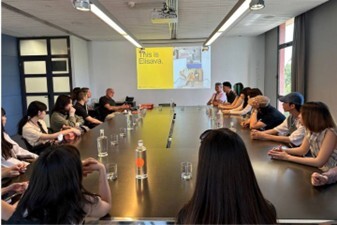
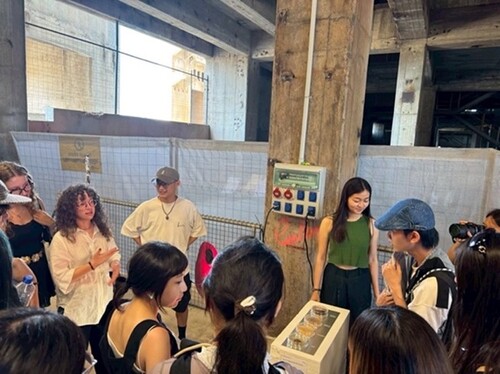
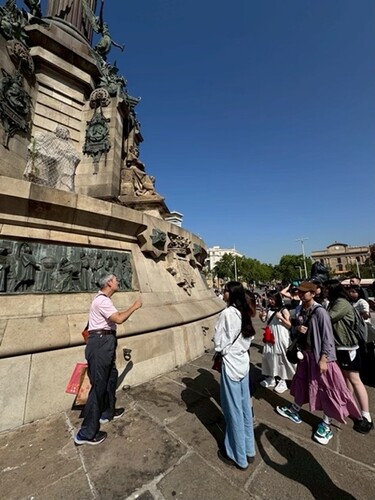
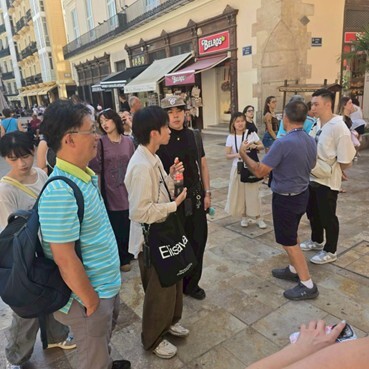
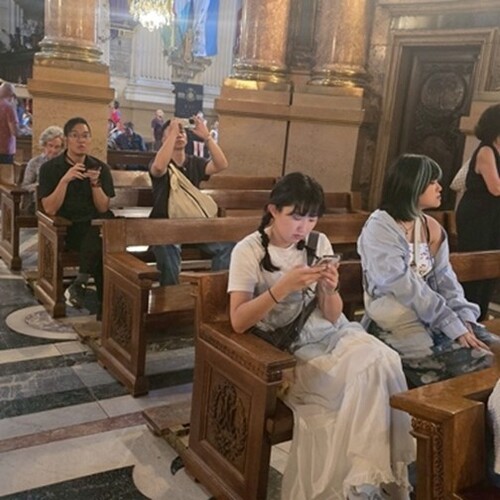
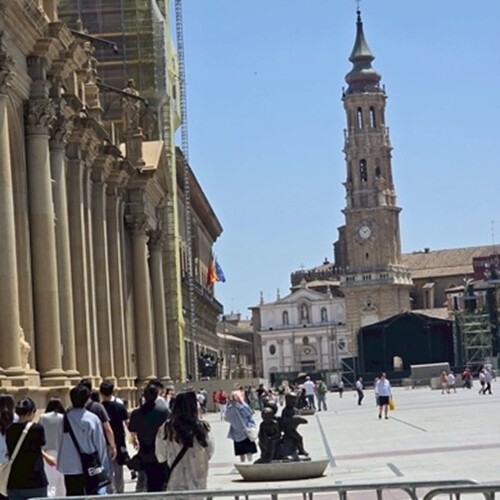
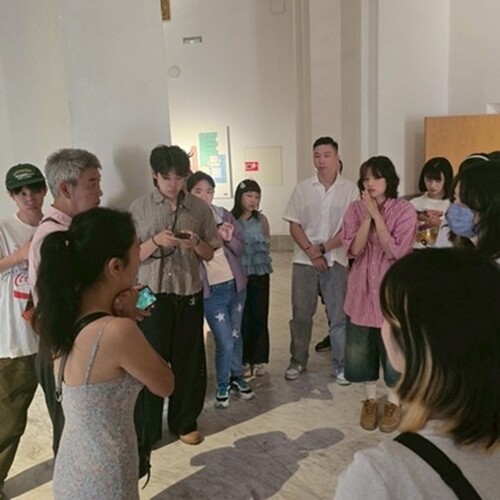
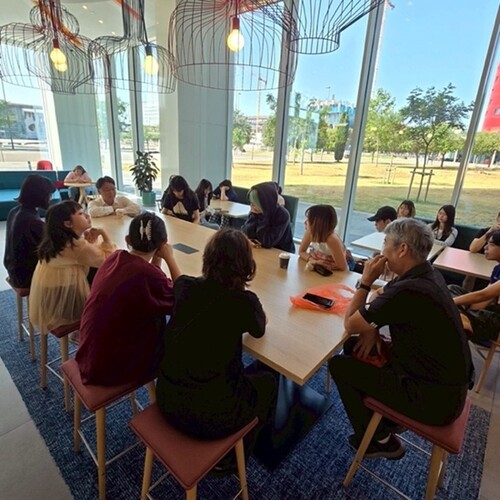
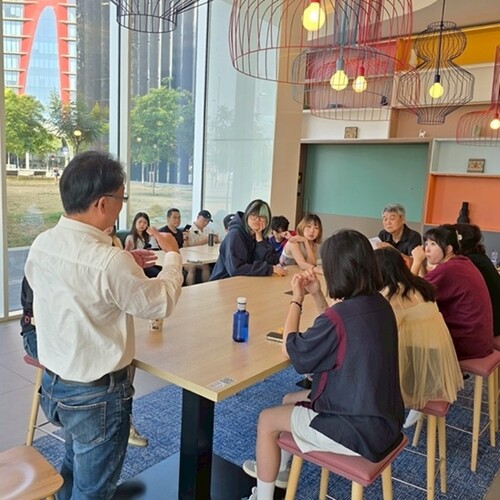
To broaden students' international perspective and cultivate their cultural design literacy, the Department of Visual Communication Design at Ming Chi University of Technology organized a 12-day design study tour in Spain this June. The course centered around the theme "The Encounter of Modern and Classical Design," guiding students through on-site visits and design workshops to explore the evolution and application of totemic aesthetics in European architecture and decorative arts.
Led by Prof. Li Chang-Kuo from the Department of Visual Communication Design and Director Chiang Zun-Hua from the Department of Industrial Design, students visited Barcelona, Valencia, and Zaragoza, observing how totemic motifs have evolved from medieval architectural decoration into contemporary design language. The trip encouraged students to consider how visual forms can be integrated into modern product and communication design.
Experiencing Gaudí’s Design Language: Translating Nature into Totemic Expression
The journey began in the design capital of Barcelona, where students visited the renowned Elisava School of Design, engaging in academic exchange and attending its annual graduate exhibition. Hosted personally by Prof. Santiago, a representative of the school, students gained firsthand insight into the local design education system and observed a wide range of student works.
The itinerary then shifted focus to Antoni Gaudí, exploring his masterpieces—particularly the iconic yet unfinished Sagrada Família. Under faculty guidance, students analyzed how Gaudí incorporated natural elements such as animals, plants, light, and texture into architectural language, reflecting on the relevance of biomorphic design in contemporary product development.
Park Güell was another highlight of the visit. Its winding mosaic benches and dragon-shaped fountains offered students a tangible example of how Gaudí blended decorative totems seamlessly into natural landscapes and public environments, inspiring students to consider the interaction between decoration, space, and user experience.
Discovering Valencia's Totemic Vocabulary: A Cultural Dialogue between Past and Present
In Valencia, Spain’s third-largest city, students embarked on a cross-temporal journey of totemic observation. The first stop was the Catedral de Valencia, a fusion of Romanesque, Gothic, and Baroque architecture. Through guided tours and detailed sketching, students explored how multiple architectural styles and symbolic decorations coexist within a single structure, discovering the layered symbolism of religious totems.
The following day, the group visited the Mercado Central, a historic market known for its colorful ceramic tiles, geometric iron framework, and stained glass domes. Students noted how decorative patterns rhythmically integrated into daily life and recorded these motifs through sketches and photographs. This sparked discussions on how visual logic from traditional spaces could inspire packaging design and commercial visual planning.
In the Museu de Belles Arts de València, students explored paintings and sculptures dating from the Roman era to the 18th century. Under faculty guidance, they analyzed human figures, background composition, and visual symbolism, gaining a deeper understanding of how cultural meaning is conveyed through imagery and how these codes might be translated into contemporary visual design.
The day concluded with a visit to the futuristic City of Arts and Sciences (Ciutat de les Arts i les Ciències), designed by Santiago Calatrava. With its sleek lines and organic structures, this modern landmark exposed students to minimalist geometry, structural form, and the use of light as visual language, prompting critical reflections on how decorative and structural design can merge in public space and product aesthetics.
Zaragoza: Reconstructing Totemic Motifs through Mudejar Aesthetics
The final destination was the historic city of Zaragoza. Students visited the Basílica de Nuestra Señora del Pilar and the Palacio de la Aljafería, both exemplary of Mudejar architecture, which blends Islamic geometric totems with symmetrical spatial design. Students hand-sketched patterns observed on-site, dissected stylistic compositions, and experimented with reconstructing these forms into new creative outputs. These exercises served as inspiration for graphic, product, and material-based design applications.
Conclusion: Entering the Beauty of Totems, Exiting the Boundaries of Design
The program emphasized the concept of “cultural site as learning space,” encouraging students to learn through direct observation and design reflection. Through field studies, guided discussions, and visual translation practices, students developed a capacity to reinterpret totemic elements within their own design vocabulary, gaining insights into the cultural and historical significance embedded in decorative art. The trip also sparked strong interest among students in European design education, with several considering short-term exchange or postgraduate studies in Spain.
Prof. Li Chang-Kuo and Director Chiang Zun-Hua led the program personally, offering in-depth academic commentary throughout the journey. As both educators emphasized in the final reflection:
“Design is not just technique—it is the interpretation and redefinition of culture.” This totem-focused design journey through Spain represents a concrete practice of Ming Chi University’s vision to cultivate globally minded designers with cultural depth and visual sensitivity.
中文:管設學院的設計見學課程帶領同學探索西班牙加泰隆尼亞地區的設計--激發學生永續設計創意
This article is simultaneously published in the 33th edition of the SDGs E-paper.






